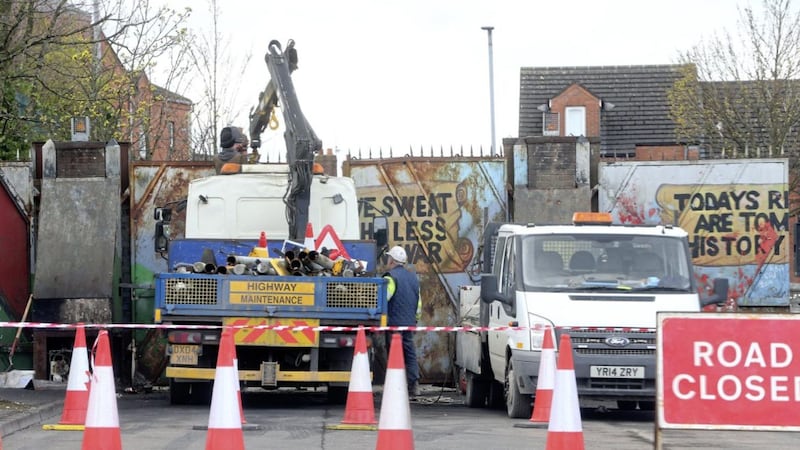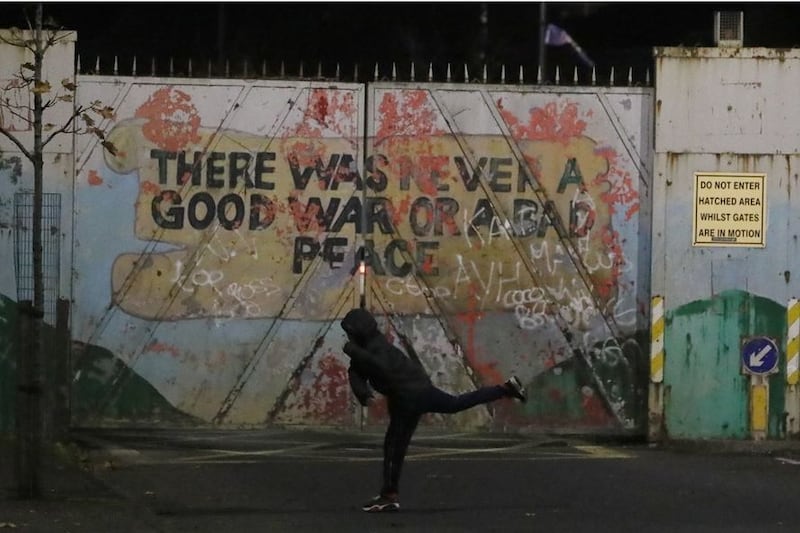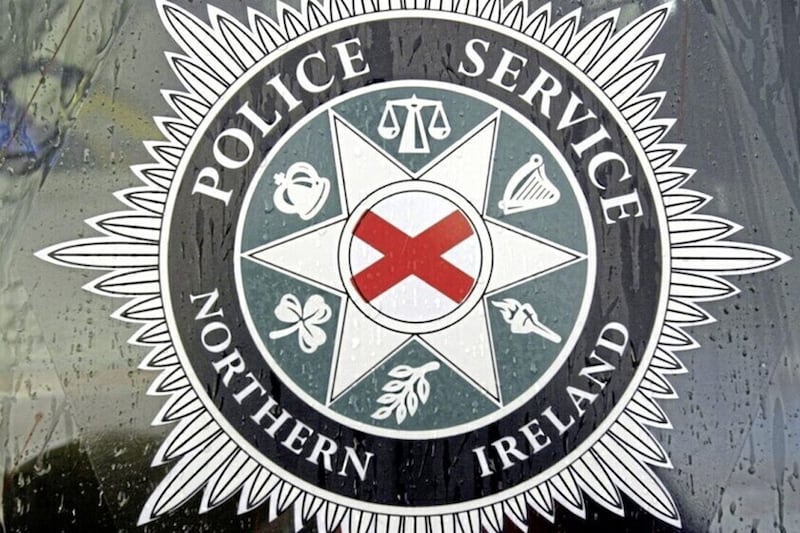LYING between the loyalist Shankill Road and republican Falls and Springfield roads, Lanark Way has been one of the deadliest interface areas in Northern Ireland in recent decades.
Once known as the Brick Fields, there have been reports of people killed in rioting between the two communities since the mid 19th century.
According to historian Eamon Phoenix, the settlement of the Falls and other areas by Catholics driven by famine into the previously 94 per cent Protestant and `liberal' city of Belfast sparked the beginning of sectarian tensions which were to build to deadly cycles of violence.
"Shaken by the industrial revolution" and demographic changes, it became "a divide city", with the first wave of riots at nearby Millfield in 1813.
Brick Fields and the adjoining Spring Fields saw deadly riots between 1857 and 1872.
"They became more and more orchestrated and organised in patterns," Dr Phoenix told The Irish News, pointing to the increase in secret societies - such as the Protestant Orange Order and Catholic Ribbon Men - brought by rural in-comers as one reason for this.
"The 1886 riots were very serious, about 60 people died. These riots were about Home Rule."
Riot commissioners were appointed by the government, who reported Brick Fields as lying between a "population of poorer classes raised mainly in the surrounding areas" of the Shankill and Falls.
They said "great points of danger to the peace of the town are the open spaces in borderlands between the two quarters".
"Two of these spaces - Brick Fields and Spring Fields - will be found to have been the theatres of some of the worst cases of riots."
They noted people there were "normally a most peaceful and industrial community, but unfortunately support has grown up amongst these people".
While photographing the locked security barrier on the Lanark Way interface a lady came along and passed 2 bags of food underneath to her friend who lives on the other side. #thisisbelfast #shotoniphone @irish_news pic.twitter.com/er9rU6LzAI
— Mal McCann (@MalMccann) April 8, 2021
By 1969, when the modern Troubles were beginning across the north, that area was again a flashpoint for violence.
That August, the `burning of Bombay Street', less than half a mile away, which saw houses in the Catholic working class street burned to the ground by a loyalist mob, was a catalyst for the posting of British troops.
Lanark Way was a longtime flashpoint during the summer marching season, with violence flaring regularly around the contentious Whiterock Orange Lodge parade.
While the first modern peace walls were built in 1969, according to the Belfast Interface Project, Lanark Way was only built by Westminster's Department of Justice in 1988, when the clearance of old houses allowed its construction.
Running between Springfield Road and Merkland Place, the electronically controlled metal gates, were four metres high and 10 metres wide.
As of five years ago, it was the sole gate in the area for which the PSNI had responsibility for opening and closing, doing so remotely.
The vehicle and pedestrian gates were closed daily between 10.30pm and 7am.
In the early 1990s UDA member Stephen McKeag nicknamed Lanark Way `the Yellow Brick Road' as a favoured escape route for himself and fellow loyalist gunmen leaving republican west Belfast, according to the book Inside the Heart of Loyalist Terror.
In 2009, police came in for criticism after they were accused of "facilitating" the funerals of senior loyalist Jim McDonald by closing roads in the Shankill area - including Lanark Way.
EU peace funding has been secured for a €6.5 million purpose-built shared space for women and their families on Lanark Way "to create a welcoming, safe and accessible shared space for women and their families all communities" to open in 2023.
Read more:Another night of violence
Club statement: pic.twitter.com/7UVqpHXDMq
— St. James Swifts (@stjamesswifts) April 8, 2021







